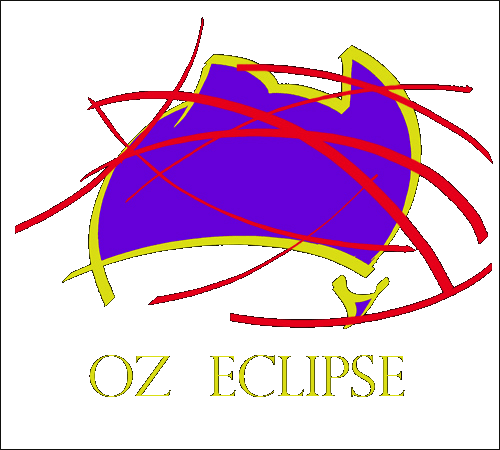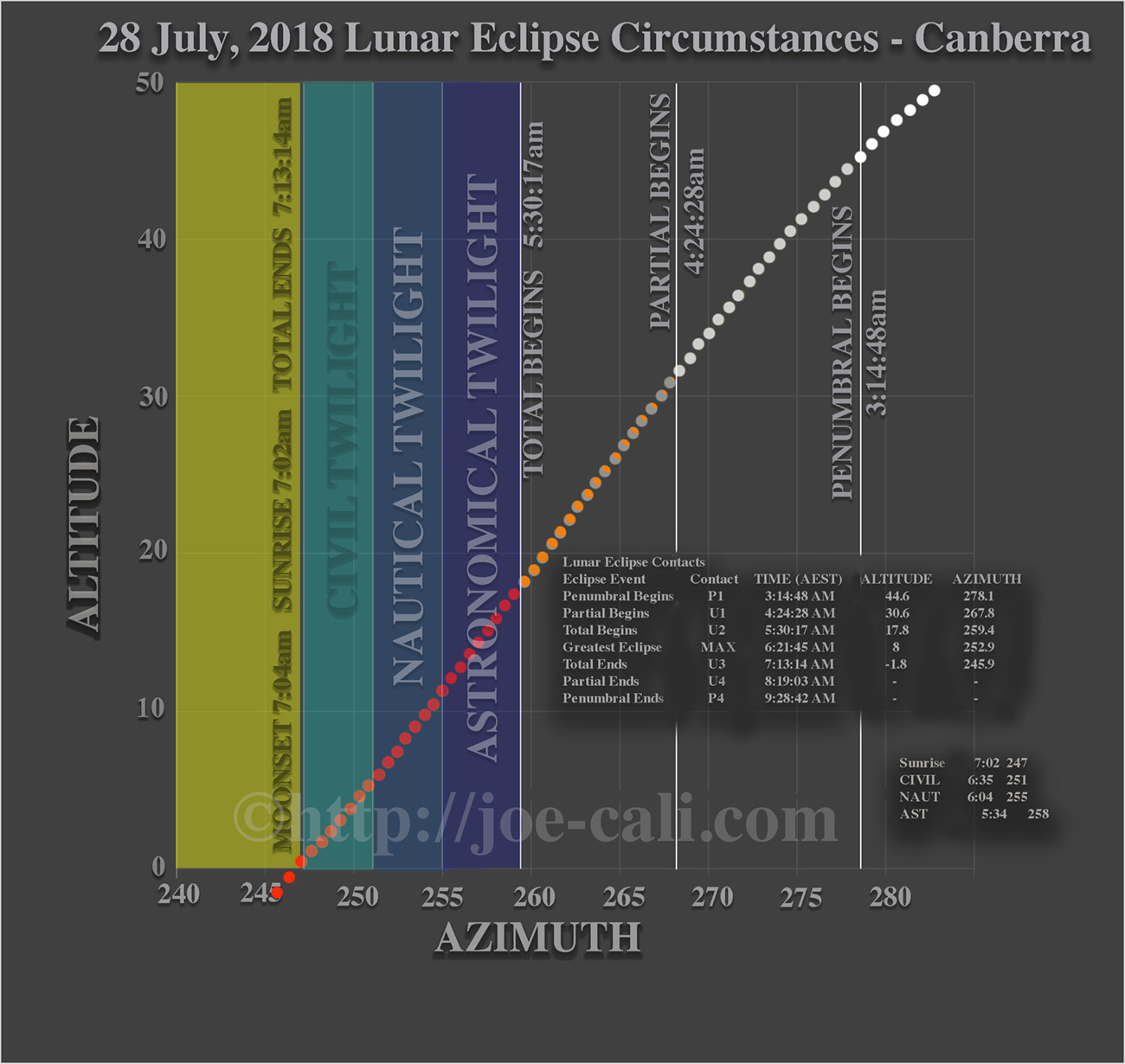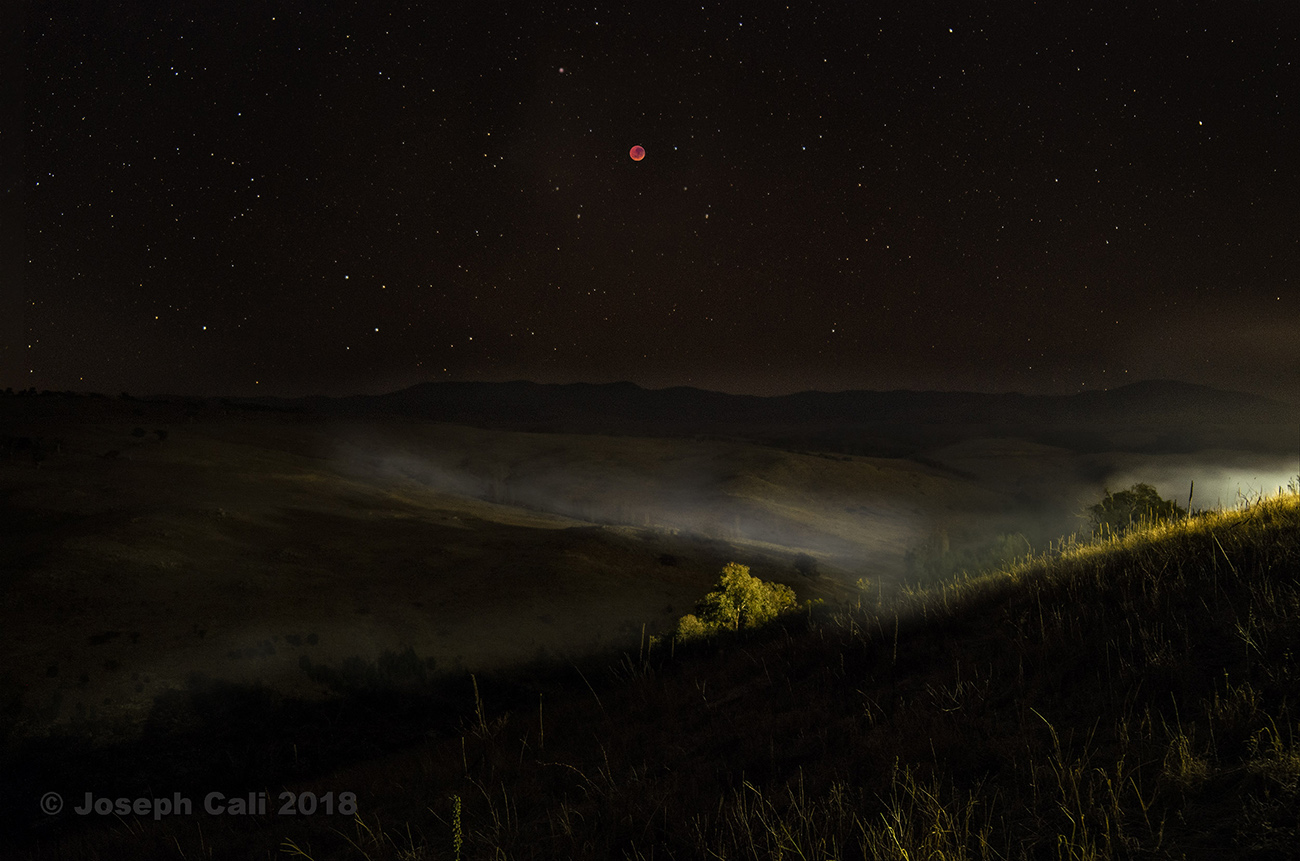
 |
WAITING
FOR THE SHADOW
SOLAR AND LUNAR ECLIPSE OBSERVINGFUTURE EXPEDITION & EVENT PLANNING |
|
|
|
|
|
|
|
|
|


 |
 |
 |
 |
 |
 This camera image just managed to capture totality in the civil twilight sky. The Moon slipped behind the Brindabella Mountains just after this image was taken 20 mins before time of Moonset for an ideal horizon and 18 minutes before sunrise. |